Shiitake mushrooms represent one of the culinary world's most treasured ingredients, offering an extraordinary combination of rich umami flavor, impressive nutritional benefits, and remarkable versatility in the kitchen. Known scientifically as Lentinula edodes, these distinctive brown-capped fungi have earned their reputation as the second most popular mushroom variety globally, trailing only behind common button mushrooms in consumption.
With their meaty texture, earthy flavor profile, and exceptional health-supporting properties, shiitake mushrooms have transcended their traditional Asian origins to become a beloved ingredient in kitchens worldwide. These remarkable fungi offer large caps measuring 2 to 5 inches wide, varying in color from light tan to rich chocolate brown, creating an attractive contrast with their pale cream-colored undersides.
The name "shiitake" originates from Japan, derived from "shii" (referring to the oak tree on which these mushrooms naturally grow) and "take" (meaning mushroom). This etymological connection reflects the deep cultural and ecological relationship between these fungi and their natural hardwood habitat, a relationship that has been cultivated and perfected over more than 1,000 years of traditional growing practices.
Historical Significance and Cultural Heritage
Ancient Origins and Traditional Use
Shiitake mushrooms boast a remarkable historical legacy that spans over a millennium, with people in China first beginning cultivation approximately 1,000 to 1,200 years ago, where they knew the species as dongo or shanku. This ancient practice represented one of humanity's earliest attempts at controlled mushroom cultivation, demonstrating the profound understanding our ancestors had of these beneficial fungi.
The cultivation methods developed in China eventually spread to Japan, where they were refined and expanded by Japanese cultivators. Interestingly, samurai warriors controlled most of the shiitake production for the aristocracy, highlighting the high value placed on these mushrooms in feudal Japanese society. This exclusivity contributed to shiitake's reputation as a premium ingredient, a status that continues to this day.
Traditional Medicine Applications
Throughout their long history, shiitake mushrooms have held an important place in traditional medicine systems across East Asia. In traditional Chinese medicine, shiitake are thought to boost health and longevity, as well as improve circulation. These medicinal applications were based on centuries of empirical observation and use, long before modern science began to understand the biochemical mechanisms behind their health benefits.
Historical texts from various Asian cultures document the use of shiitake mushrooms for treating respiratory ailments, supporting immune function, and promoting overall vitality. This traditional knowledge has provided the foundation for much of the modern scientific research into shiitake's health benefits.

Comprehensive Nutritional Profile
Macronutrient Content and Caloric Value
Shiitake mushrooms offer an impressive nutritional profile while remaining remarkably low in calories, making them an excellent choice for health-conscious individuals. One cup of cooked shiitake mushrooms (145g) provides approximately 81 calories, 2.3g of protein, 21g of carbohydrates, and just 0.3g of fat. This macronutrient distribution makes shiitakes an ideal food for those seeking to maximize nutritional density while minimizing caloric intake.
Despite their low calorie content, shiitake mushrooms provide all of the essential amino acids, making them a valuable protein source for vegetarians and vegans. The protein quality in shiitakes is particularly notable for a non-animal source, contributing to their reputation as a meat substitute in various culinary applications.
Essential Vitamins and Mineral Content
Shiitake mushrooms excel as a source of several critical vitamins and minerals that are often challenging to obtain from other food sources. They contain one of the highest amounts of natural copper among common foods, with just 1/2 cup of shiitake mushrooms providing 72 percent of your daily recommended intake of this essential mineral. Copper supports healthy blood vessels, bone formation, and immune system function.
The mushrooms are also a rich source of selenium, providing 33 percent of your daily requirement. Selenium plays crucial roles in antioxidant defense, thyroid function, and immune system regulation. Additionally, shiitakes serve as an excellent source of B vitamins, particularly B5 (providing 104% of daily recommended intake per cup), thiamin, riboflavin, folate, niacin, and B6.
Unique Bioactive Compounds
What truly sets shiitake mushrooms apart from other foods is their impressive array of bioactive compounds that contribute to their health benefits. These include beta-glucans (polysaccharides that support immune function), eritadenine (a compound that helps reduce cholesterol levels), and lentinan (a powerful immune-supporting polysaccharide).
Shiitake mushrooms also contain significant amounts of antioxidant compounds, including alkaloids, phenols, and diterpenoids, which provide protection against oxidative stress and cellular damage. These compounds work synergistically to deliver the wide range of health benefits associated with regular shiitake consumption.
Evidence-Based Health Benefits
Cardiovascular Health Support
One of the most well-documented benefits of shiitake mushrooms involves their positive impact on cardiovascular health. Shiitake mushrooms contain three key compounds that help lower cholesterol levels: eritadenine, sterols, and beta-glucans. Eritadenine inhibits an enzyme involved in producing cholesterol, while sterols help reduce the absorption of dietary cholesterol, and beta-glucans help prevent the intestines from absorbing cholesterol.
Clinical research has demonstrated these effects in human studies. Research from Shizuoka University in Japan found that eritadenine supplementation significantly decreased plasma cholesterol concentration. The beta-glucan content in shiitakes has been shown to be particularly effective for cholesterol reduction, with studies indicating significant improvements in blood lipid profiles with regular consumption.
Immune System Enhancement
Shiitake mushrooms provide some of the most impressive immune-boosting benefits found in any food source. They are rich in polysaccharides like lentinans and other beta-glucans, compounds that protect against cell damage, help strengthen the immune system, and boost white blood cell production for fighting off microbes.
A significant 2015 study published in the Journal of the American College of Nutrition evaluated 52 healthy adults aged 21–41 years in a four-week trial involving participants consuming either five or 10 grams of shiitake mushrooms daily. The results demonstrated that consuming shiitakes improved immune cell function and enhanced gut immunity, with participants showing increased levels of immunoglobulin A (IgA), an antibody that protects against infection.
Cancer Prevention and Support
Research into shiitake mushrooms' anti-cancer properties has yielded promising results, particularly regarding their ability to support immune function during cancer treatment. The lentinan found in shiitake mushrooms has been extensively studied for its potential cancer-fighting properties, with clinical studies showing that using lentinan in addition to chemotherapy may prolong survival in patients with advanced gastric cancer compared to chemotherapy alone.
Beta-glucans in shiitake mushrooms have been found to stimulate the immune system and may protect against certain types of tumors. In Japan, beta-glucans derived from shiitake have been approved as adjunctive therapy for cancer treatment, highlighting the serious therapeutic potential of these compounds.
Antimicrobial and Infection-Fighting Properties
Several compounds in shiitake mushrooms demonstrate significant antibacterial, antiviral, and antifungal effects. While isolated compounds show antimicrobial activity in laboratory studies, regular consumption of shiitake mushrooms may contribute to overall immune resilience and help the body resist various pathogens.
Studies have shown that shiitake extracts can inhibit the growth of various harmful bacteria and viruses in laboratory settings. While more research is needed to confirm these effects in human consumption, the antimicrobial properties of shiitakes represent an important area of ongoing investigation.
Bone Health and Vitamin D Content
Shiitake mushrooms offer a unique advantage as one of the few natural plant sources of vitamin D, an essential nutrient for bone health that is typically difficult to obtain from food sources. When shiitake mushrooms are exposed to UV light during cultivation, they develop higher levels of vitamin D, making UV-treated shiitakes capable of providing enough vitamin D to meet daily recommended needs.
Research has shown that vitamin D from mushrooms is as effective as vitamin D from other sources in supporting bone health and calcium absorption. This makes shiitakes particularly valuable for individuals who have limited sun exposure or follow plant-based diets.
Weight Management and Metabolic Health
Shiitake mushrooms offer several properties that support healthy weight management and metabolic function. Their high fiber content promotes satiety and helps regulate digestion, while their low calorie density allows for satisfying portions without excessive caloric intake.
A 2014 study published in the Nutrients journal found that consuming shiitake mushrooms for combating obesity can be an effective tool for achieving weight loss goals. The study suggested that certain components of shiitake mushrooms have hypolipidemic (fat-reducing) effects, helping to prevent body weight gain and fat deposition when included in the diet.
Culinary Excellence and Cooking Methods
Flavor Profile and Texture Characteristics
Shiitake mushrooms are renowned for their distinctive rich, earthy flavor and meaty texture that make them ideal for a wide variety of culinary applications. They possess a robust umami taste that adds depth and complexity to dishes, often described as having a woodsy, almost bacon-like quality when properly prepared.
The texture of shiitake mushrooms is particularly noteworthy, offering a satisfying bite that holds up well to various cooking methods. When fresh, they have a firm, slightly chewy consistency that becomes tender and succulent when cooked, making them an excellent meat substitute in vegetarian and vegan dishes.
Essential Preparation Techniques
Proper preparation of shiitake mushrooms is crucial for achieving optimal flavor and texture. Begin by gently wiping the mushrooms with a damp paper towel to remove any dirt or debris, avoiding rinsing them with water as they easily absorb moisture and can become soggy when cooked.
The stems of shiitake mushrooms require special attention, as they tend to be tough and woody. For larger mushrooms, remove the entire stem, while smaller ones may only need the tough lower portion removed. The stems shouldn't be discarded entirely, as they make excellent additions to vegetable stocks and broths, imparting rich umami flavor.
Optimal Cooking Methods
Sautéing Technique
Sautéing represents one of the most effective methods for cooking shiitake mushrooms, allowing their natural flavors to concentrate while achieving a beautiful golden-brown color. Heat a combination of olive oil and butter in a medium-high skillet, add sliced shiitakes, and cook for 4-5 minutes without stirring initially to promote proper caramelization.
The key to perfect sautéed shiitakes lies in patience – allow the mushrooms to develop a golden crust on one side before turning them. This caramelization process intensifies their umami flavor and creates the ideal texture contrast between crispy edges and tender centers.
Roasting and Baking Applications
Roasting shiitake mushrooms in the oven brings out their natural sweetness while maintaining their meaty texture. Coat whole or sliced mushrooms with olive oil, salt, and preferred seasonings, then roast at 400°F for 15-20 minutes until golden brown and tender.
This method works particularly well for larger quantities and allows for hands-off cooking while other meal components are prepared. Roasted shiitakes make excellent additions to grain bowls, pasta dishes, and as standalone side dishes.
Asian-Inspired Preparations
Traditional Asian cooking methods showcase shiitake mushrooms in their cultural context, often featuring them in stir-fries, soups, and braised dishes. A simple preparation involves cooking sliced shiitakes with sesame oil, soy sauce, and garlic for 3-4 minutes until tender, creating a classic flavor combination that complements rice dishes, noodles, and vegetables.
Dried Shiitake Applications
Dried shiitake mushrooms offer concentrated flavor and extended shelf life, making them valuable pantry staples. To rehydrate dried shiitakes, soak them in warm water for 20-30 minutes until tender, reserving the soaking liquid as it contains concentrated umami compounds perfect for broths and sauces.
Dried shiitakes work exceptionally well in slow-cooked dishes like stews, braises, and soups, where their intense flavor can permeate throughout the entire dish. They can also be ground into powder form to create umami-rich seasoning blends.
Home Cultivation Methods
Understanding Shiitake Growing Requirements
Growing shiitake mushrooms at home represents a rewarding but somewhat challenging endeavor that requires patience and attention to detail. Unlike more aggressive mushroom species like oyster mushrooms, shiitakes are somewhat pickier about their growing conditions and take longer to establish, but the results are well worth the extra effort.
Shiitake mushrooms are wood-decaying fungi that naturally grow on dead hardwood logs, particularly oak, maple, beech, and other deciduous trees. Understanding this natural habitat is crucial for successful cultivation, as it informs the substrate choices and environmental conditions needed for optimal growth.
Log Cultivation Method
Selecting and Preparing Logs
The traditional method of growing shiitake mushrooms involves inoculating hardwood logs with shiitake spawn. Choose freshly cut logs from healthy trees, ideally 3-8 inches in diameter and 36-40 inches in length. Oak, maple, beech, and birch are preferred species, while avoiding softwoods like pine or fir.
Logs should be cut during the dormant season (fall through early spring) when sugar content is highest and natural antimicrobial compounds are at their lowest levels. Allow logs to season for 2-6 weeks after cutting to let natural antifungal compounds dissipate while maintaining adequate moisture content.
Inoculation Process
Inoculation involves introducing shiitake spawn into the logs through drilled holes. Drill holes approximately 1 inch deep and 5/16 inch in diameter, spacing them 6-8 inches apart in a diamond pattern around the log's circumference. Each 4-foot log typically requires 30-40 inoculation points.
Insert shiitake spawn (either plug spawn or sawdust spawn) into each hole, then seal with food-grade wax such as beeswax or cheese wax. This sealing prevents contamination and moisture loss while allowing the shiitake mycelium to colonize the log interior.
Long-term Management
Inoculated logs require 6-18 months to fully colonize before producing mushrooms, during which time they should be kept in a shaded, humid environment. Stack logs on pallets or supports to allow air circulation while maintaining moisture levels through periodic watering during dry periods.
Once established, shiitake logs can produce mushrooms for 6-8 years, with flushes typically occurring in spring and fall following periods of rain or after artificial soaking. This long-term productivity makes log cultivation highly economical despite the initial investment of time and materials.
Indoor Cultivation Options
Sawdust Block Method
Indoor shiitake cultivation typically involves growing on sawdust-based substrates that provide faster colonization and more predictable fruiting than log cultivation. This method uses supplemented hardwood sawdust combined with wheat bran or other nitrogen-rich additives to create an optimal growing medium.
The sawdust substrate must be sterilized to eliminate competing microorganisms, then inoculated with shiitake spawn in sterile conditions. The mixture is packed into autoclavable grow bags and incubated at room temperature for 8-16 weeks until fully colonized.
Environmental Control Requirements
Successful indoor shiitake cultivation requires careful attention to environmental conditions including temperature, humidity, and air circulation. During colonization, maintain temperatures between 75-85°F with high humidity levels. For fruiting, reduce temperature to 55-75°F while maintaining 85-95% humidity.
Proper air circulation is crucial for preventing contamination and encouraging healthy mushroom formation. Many growers construct simple fruiting chambers using plastic storage containers with holes for air exchange, or invest in more sophisticated growing systems with automated environmental controls.
Substrate Alternatives and Innovations
Straw and Alternative Materials
While traditional sawdust substrates work well for shiitake cultivation, some growers experiment with alternative materials such as wheat straw, corn stalks, or other agricultural waste products. These substrates require proper pasteurization and supplementation to provide adequate nutrition for shiitake mycelium.
Straw-based substrates often require longer colonization periods but can provide excellent yields when properly managed. The choice of substrate depends on local availability, cost considerations, and individual growing preferences.
Commercial Growing Kits
For beginners interested in trying shiitake cultivation without the complexity of preparing substrates, commercial growing kits offer an excellent starting point. These kits typically include pre-colonized substrate blocks ready for fruiting, requiring only proper environmental conditions and regular misting.
While growing kits provide less control over the cultivation process, they allow newcomers to gain experience with shiitake growing requirements and harvest timing before investing in more advanced cultivation methods.
Harvesting, Storage, and Preservation
Optimal Harvest Timing
Proper timing of shiitake mushroom harvest significantly impacts both yield and quality. Young shiitakes with partially opened caps offer the best texture and flavor, while allowing mushrooms to fully mature increases total weight but may result in tougher texture and less appealing appearance.
Harvest shiitakes when the caps are 60-80% open, before the edges flatten completely. The mushrooms should feel firm to the touch with the cap edges still slightly curled under. This timing provides the ideal balance between size, texture, and flavor quality.
Post-Harvest Handling
Fresh shiitake mushrooms require careful handling to maintain quality and extend shelf life. Harvest by cutting the stem close to the substrate surface rather than pulling, which can damage the growing medium and potentially affect future flushes.
Store fresh shiitakes in paper bags or breathable containers in the refrigerator, where they typically maintain quality for 7-10 days. Avoid plastic bags, which trap moisture and accelerate spoilage, and never wash mushrooms until immediately before use.
Preservation Methods
Drying Techniques
Drying represents one of the most effective methods for preserving shiitake mushrooms while concentrating their flavors. Slice mushrooms into uniform pieces and use a food dehydrator, oven on low heat, or air-drying methods to remove moisture completely.
Properly dried shiitakes develop an intense, concentrated flavor that many consider superior to fresh mushrooms for certain applications. Store dried shiitakes in airtight containers in cool, dark locations where they can maintain quality for up to one year.
Freezing and Other Preservation
While freezing is possible for shiitake mushrooms, it significantly changes their texture, making them best suited for cooked applications after thawing. Cook shiitakes briefly before freezing to maintain better texture and flavor quality.
Other preservation methods include pickling, fermenting, or incorporating shiitakes into preserved foods like pestos, marinades, or seasoning blends that can extend their usability while adding umami flavor to various dishes.
Safety Considerations and Potential Side Effects
General Safety Profile
Shiitake mushrooms are generally safe for most people when consumed as food, with centuries of traditional use supporting their safety profile. However, like any food, some individuals may experience adverse reactions, particularly when consuming large quantities or eating them raw.
The most common side effect associated with shiitake consumption is shiitake dermatitis, a skin reaction that can occur in sensitive individuals when consuming raw or undercooked shiitakes. This reaction typically manifests as itchy, red streaks on the skin and usually resolves within 1-2 weeks without treatment.
Raw Consumption Risks
Consuming shiitake mushrooms raw may cause dermatitis in some individuals due to lentinan, a compound that provides many of the mushroom's health benefits but can trigger allergic reactions. Cooking shiitake mushrooms thoroughly eliminates this risk while still providing most of the nutritional benefits.
The compound responsible for shiitake dermatitis is heat-sensitive and breaks down during cooking, making cooked shiitakes safe for virtually all individuals who don't have mushroom allergies. Always cook shiitakes thoroughly before consumption to avoid potential skin reactions.
Drug Interactions and Medical Considerations
While shiitake mushrooms are generally safe, individuals taking certain medications should exercise caution. The immune-stimulating properties of shiitakes may interact with immunosuppressive medications, potentially reducing their effectiveness.
Additionally, the blood-pressure-lowering effects of shiitakes may enhance the effects of antihypertensive medications, potentially causing blood pressure to drop too low. Individuals taking blood pressure medications should monitor their blood pressure closely when adding significant amounts of shiitakes to their diet.
Quality Selection and Storage Guidelines
Identifying Fresh, High-Quality Shiitakes
When selecting fresh shiitake mushrooms, look for specimens with firm, plump caps that feel heavy for their size. The caps should be dry with a slight sheen, varying in color from light tan to dark brown without any dark spots, sliminess, or signs of moisture damage.
Avoid shiitakes with wrinkled, dried-out caps, soft spots, or any signs of mold growth. The gills underneath should be cream-colored to light brown, not dark or slimy. Fresh shiitakes should have a pleasant, earthy aroma without any sour or unpleasant odors.
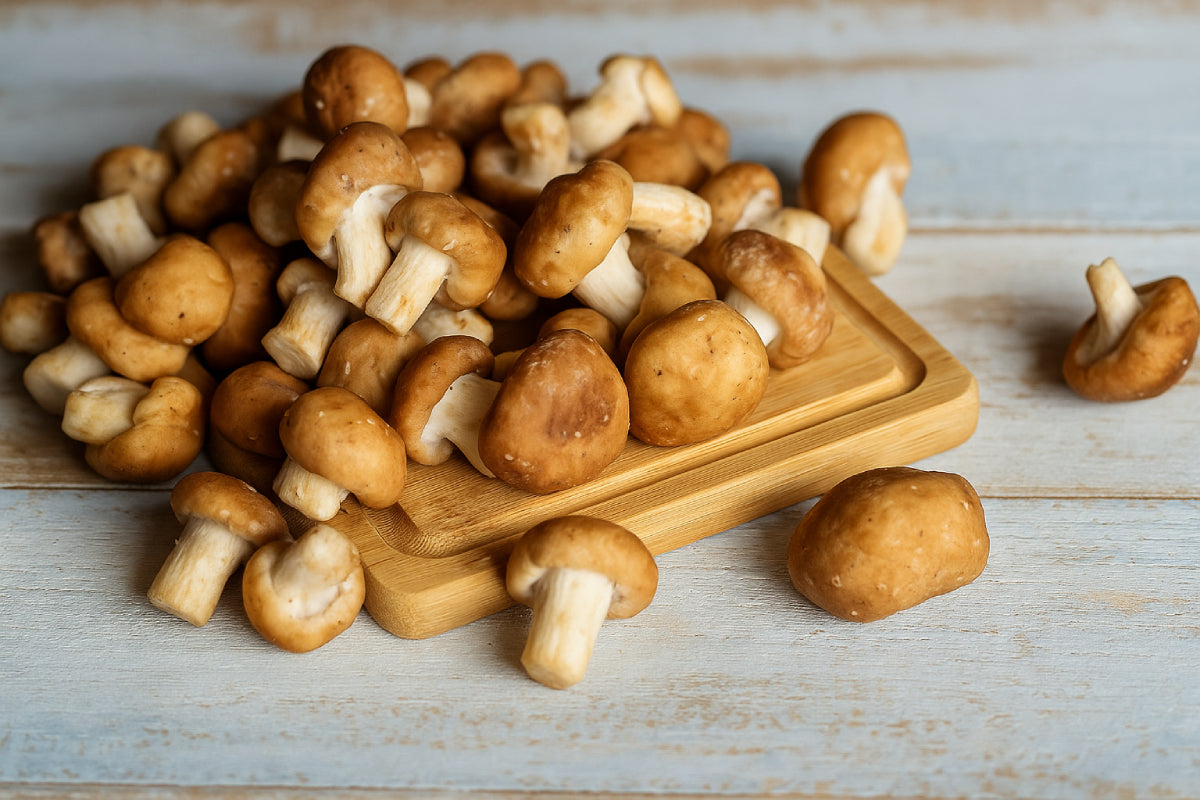
Proper Storage Techniques
Store fresh shiitake mushrooms in paper bags or breathable containers in the refrigerator's main compartment, not in the crisper drawer where humidity levels may be too high. Paper bags allow air circulation while absorbing excess moisture that could lead to spoilage.
Never store shiitakes in plastic bags, which trap moisture and accelerate decay. If purchasing shiitakes in plastic packaging, transfer them to paper bags immediately upon arriving home to extend their shelf life.
Extending Shelf Life
To maximize the shelf life of fresh shiitakes, avoid washing them until immediately before use, as excess moisture accelerates spoilage. If mushrooms appear slightly dry, they can often be revitalized by brief exposure to humidity or light misting, but avoid over-wetting.
For longer-term storage, consider drying or preserving shiitakes using appropriate methods rather than attempting to keep fresh mushrooms beyond their natural shelf life. Properly stored fresh shiitakes typically maintain quality for 7-10 days under optimal conditions.
Economic and Environmental Benefits
Cost-Effectiveness of Home Cultivation
Growing shiitake mushrooms at home can provide significant economic benefits, particularly given their high retail price compared to common mushroom varieties. A typical shiitake log inoculation project costing $50-100 can yield 10-20 pounds of mushrooms over several years, representing substantial savings compared to purchasing equivalent quantities at retail prices.
The initial investment in tools and materials pays for itself after the first few harvests, with subsequent years providing essentially free mushrooms aside from minimal maintenance costs. This economic advantage becomes even more pronounced for individuals who consume shiitakes regularly or use them in commercial applications.
Environmental Sustainability
Shiitake cultivation represents an environmentally sustainable practice that transforms waste materials into valuable food products. Growing shiitakes on logs utilizes low-grade wood that might otherwise be discarded, while sawdust-based cultivation can use waste products from lumber and furniture industries.
The spent substrates from shiitake cultivation make excellent soil amendments and compost ingredients, completing a circular system that minimizes waste while improving soil health. This sustainable approach aligns with principles of permaculture and regenerative agriculture.
Supporting Local Food Systems
Home shiitake cultivation contributes to local food security and reduces dependence on long-distance transportation of fresh mushrooms. This localization reduces carbon footprints associated with food distribution while providing fresher, higher-quality products.
Growing shiitakes locally also supports biodiversity and ecological resilience by creating habitat for beneficial insects and microorganisms while demonstrating sustainable food production methods to community members.
Future Trends and Research Directions
Emerging Cultivation Technologies
Advances in mushroom cultivation technology continue to improve the efficiency and accessibility of shiitake growing methods. Automated environmental control systems, improved substrate formulations, and innovative growing containers make shiitake cultivation more feasible for small-scale and home growers.
Research into alternative substrates and cultivation methods continues to expand the possibilities for shiitake production, with scientists exploring everything from agricultural waste streams to novel growing mediums that could revolutionize mushroom cultivation.
Nutritional Research and Health Applications
Ongoing research into the health benefits of shiitake mushrooms continues to reveal new therapeutic applications and mechanisms of action. Scientists are investigating the potential of shiitake compounds for treating various conditions, from metabolic disorders to neurodegenerative diseases.
This research may lead to the development of standardized shiitake extracts and pharmaceutical preparations that harness the mushrooms' beneficial compounds in concentrated forms for specific therapeutic applications.
Market Development and Consumer Trends
The growing popularity of functional foods and plant-based diets continues to drive demand for shiitake mushrooms and related products. This trend supports the development of new shiitake-based products, from protein powders to seasoning blends that make the benefits of these mushrooms more accessible to consumers.
As awareness of shiitake mushrooms' health benefits continues to spread, we can expect to see continued growth in both commercial production and home cultivation, making these valuable fungi more widely available and affordable.
Conclusion: Embracing the Power of Shiitake Mushrooms
Shiitake mushrooms represent a remarkable convergence of culinary excellence, nutritional density, and sustainable production methods that make them an invaluable addition to modern diets and food systems. From their ancient origins in Asian forests to their current status as a globally beloved superfood, shiitakes continue to demonstrate why they deserve their reputation as nature's most versatile fungus.
The extensive health benefits of shiitake mushrooms, from cardiovascular support and immune enhancement to potential cancer-fighting properties, provide compelling reasons to incorporate these fungi into regular dietary routines. Their rich umami flavor and meaty texture make this integration both delicious and satisfying, whether enjoyed in simple sautéed preparations or complex culinary creations.
For those interested in sustainable food production, shiitake cultivation offers an excellent opportunity to produce high-quality protein while recycling organic waste materials and supporting local food security. Whether grown on logs in backyard settings or cultivated indoors using modern techniques, shiitakes provide a rewarding and economically viable food production option.
As research continues to uncover new applications and benefits of shiitake mushrooms, their role in supporting human health and environmental sustainability becomes increasingly important. These remarkable fungi offer a path toward more sustainable, nutritious, and delicious food systems that benefit both individual health and planetary wellbeing.
The future of shiitake mushrooms looks bright, with expanding cultivation methods, growing consumer awareness, and continued scientific validation of their health benefits. For those who choose to embrace these extraordinary fungi, whether through consumption, cultivation, or both, shiitakes offer a delicious and healthful connection to one of nature's most remarkable creations.

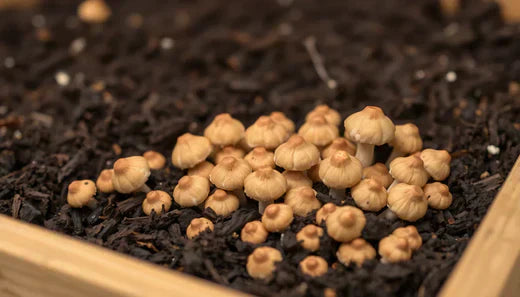
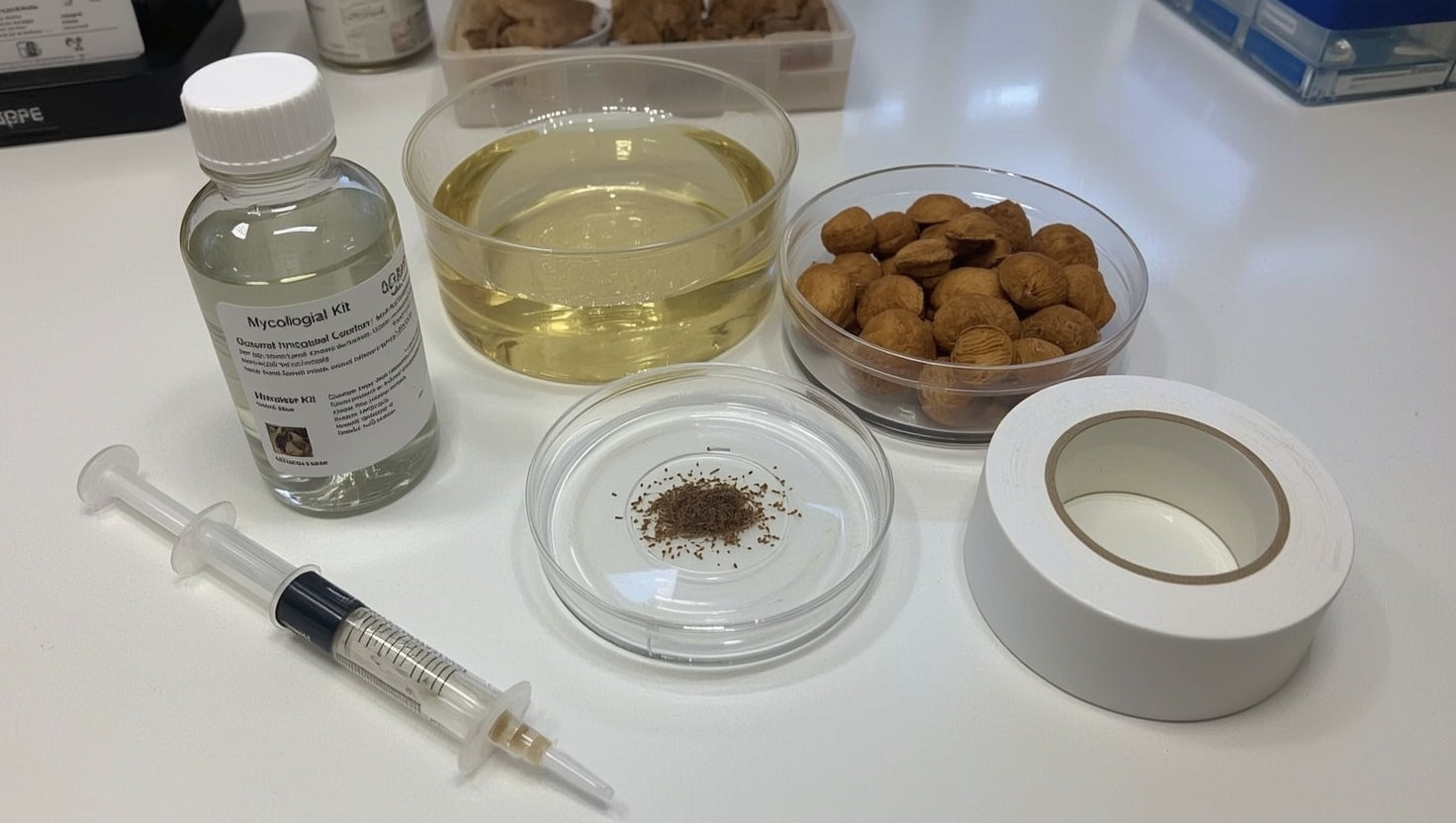
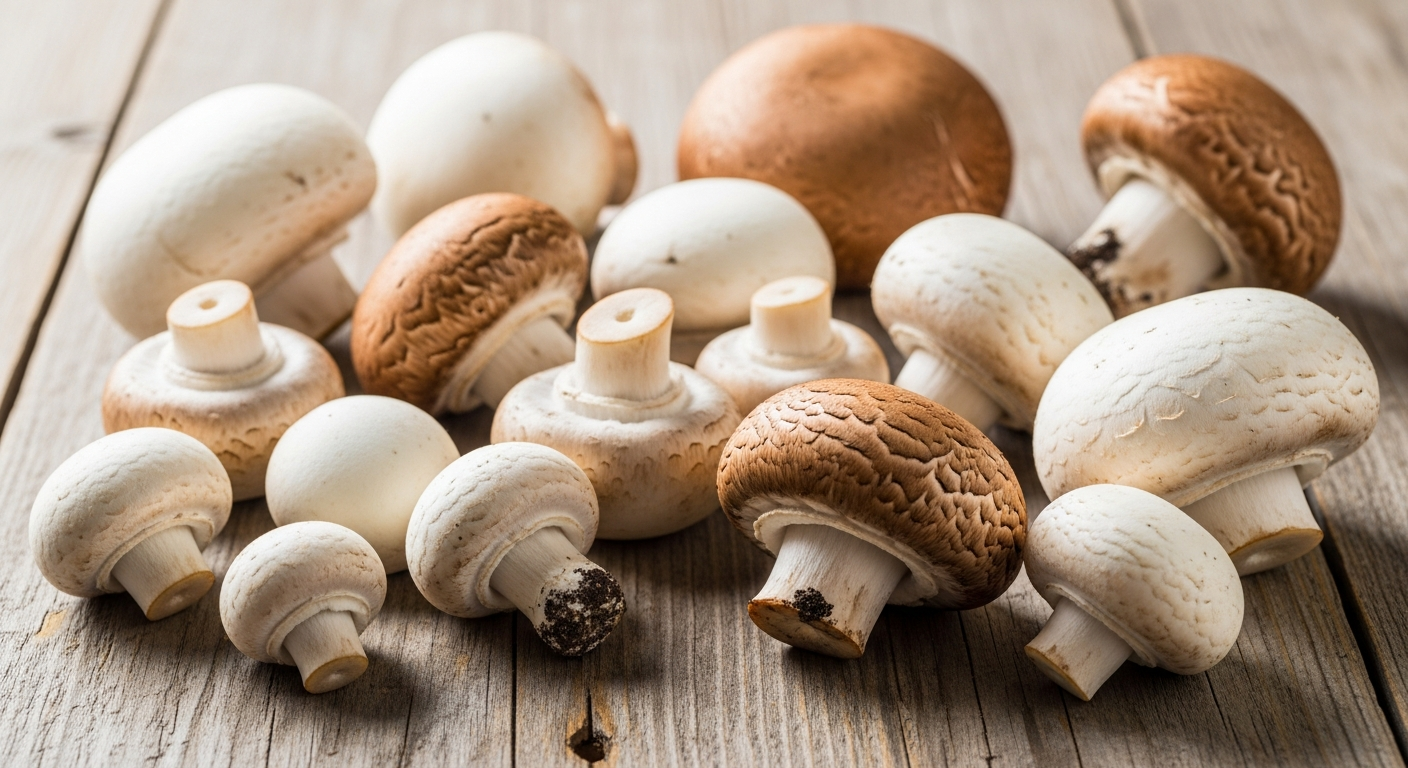
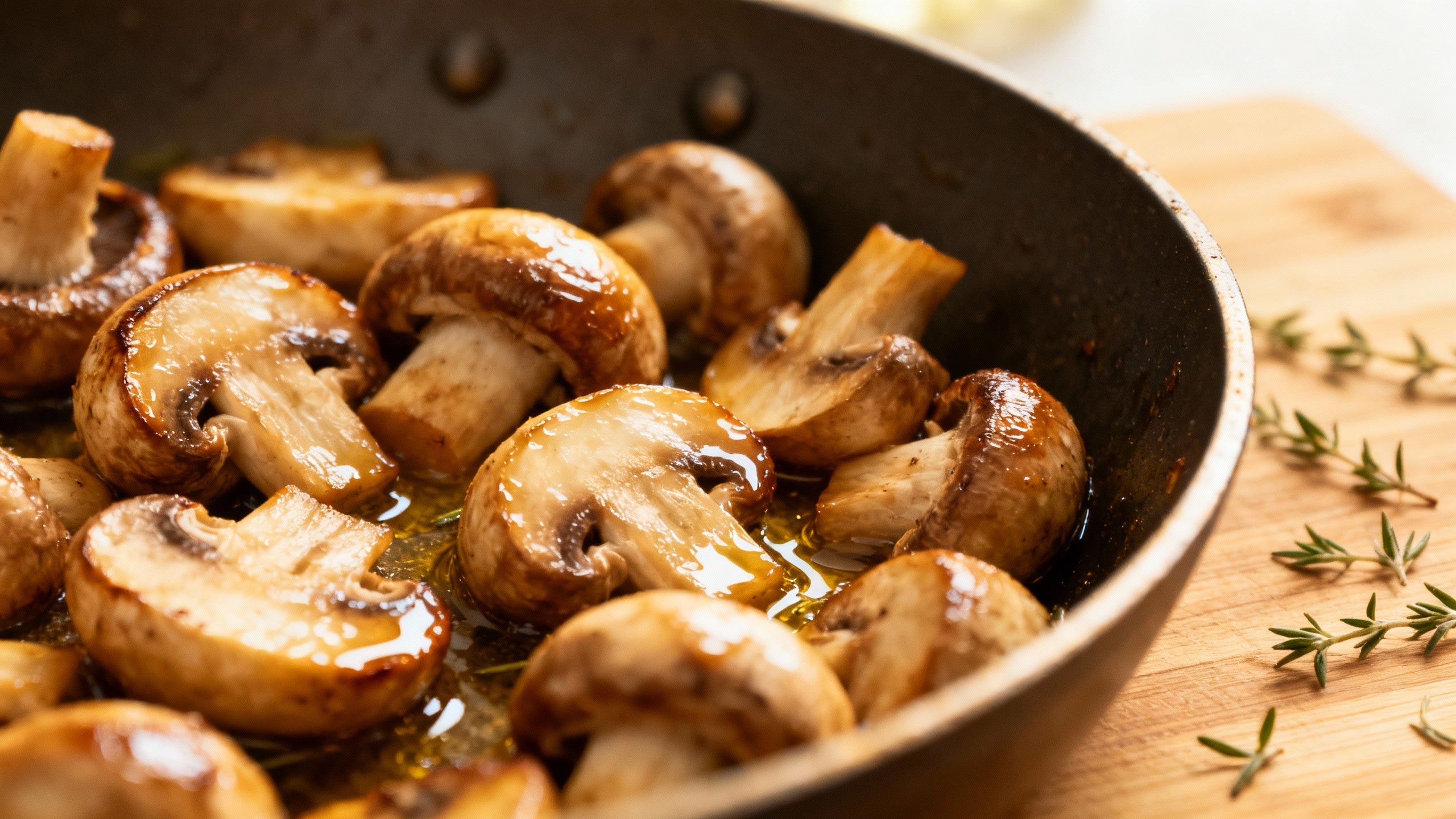
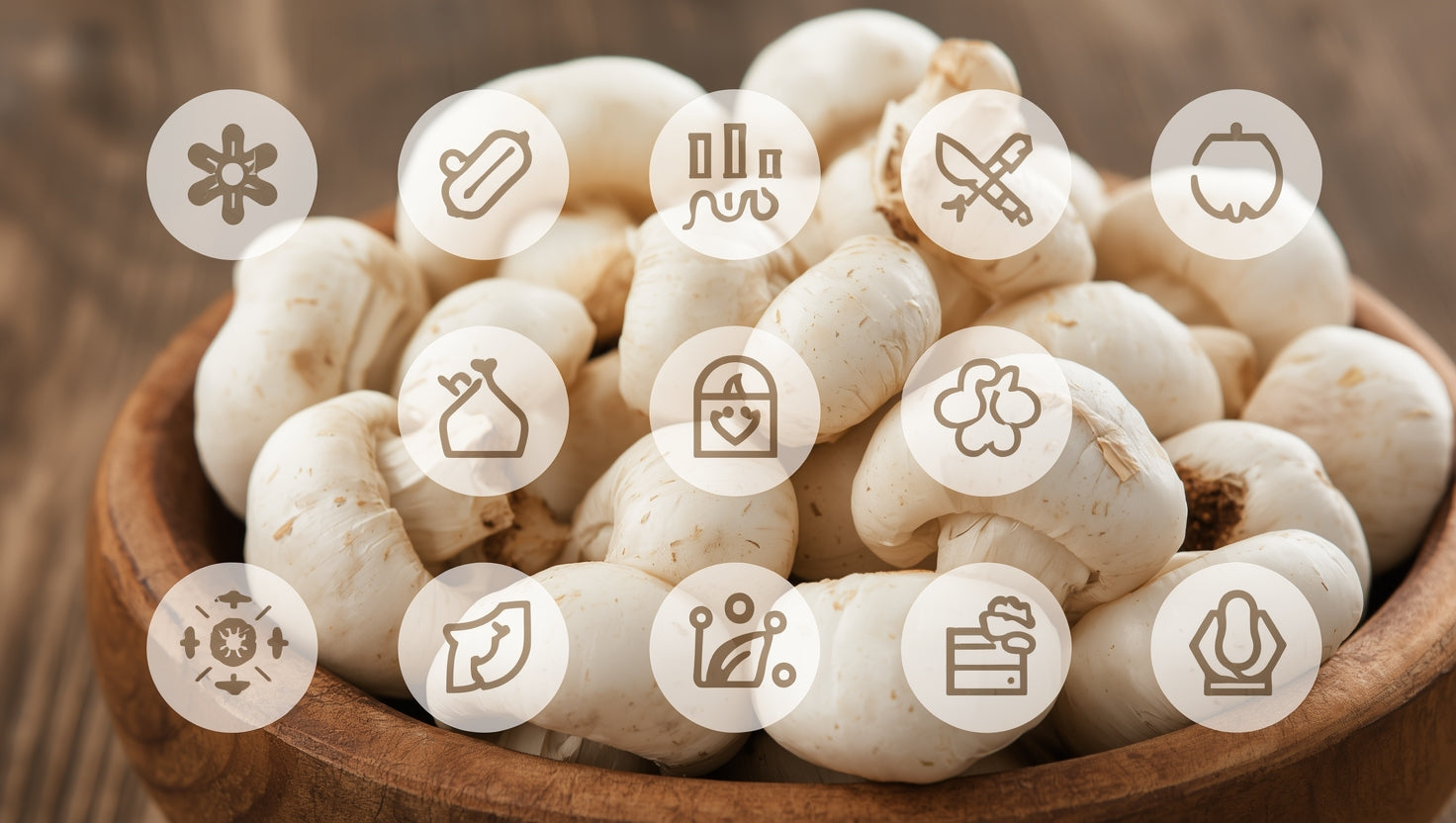
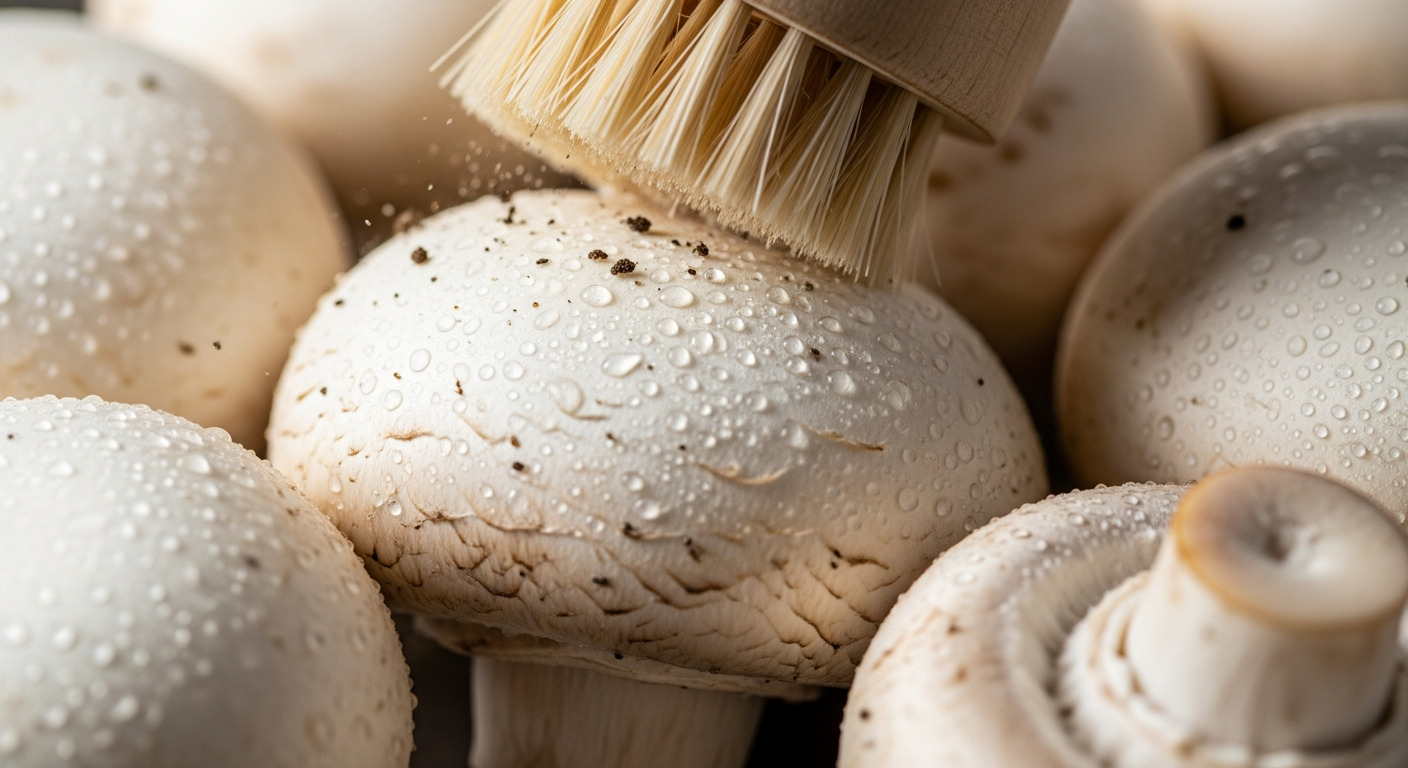
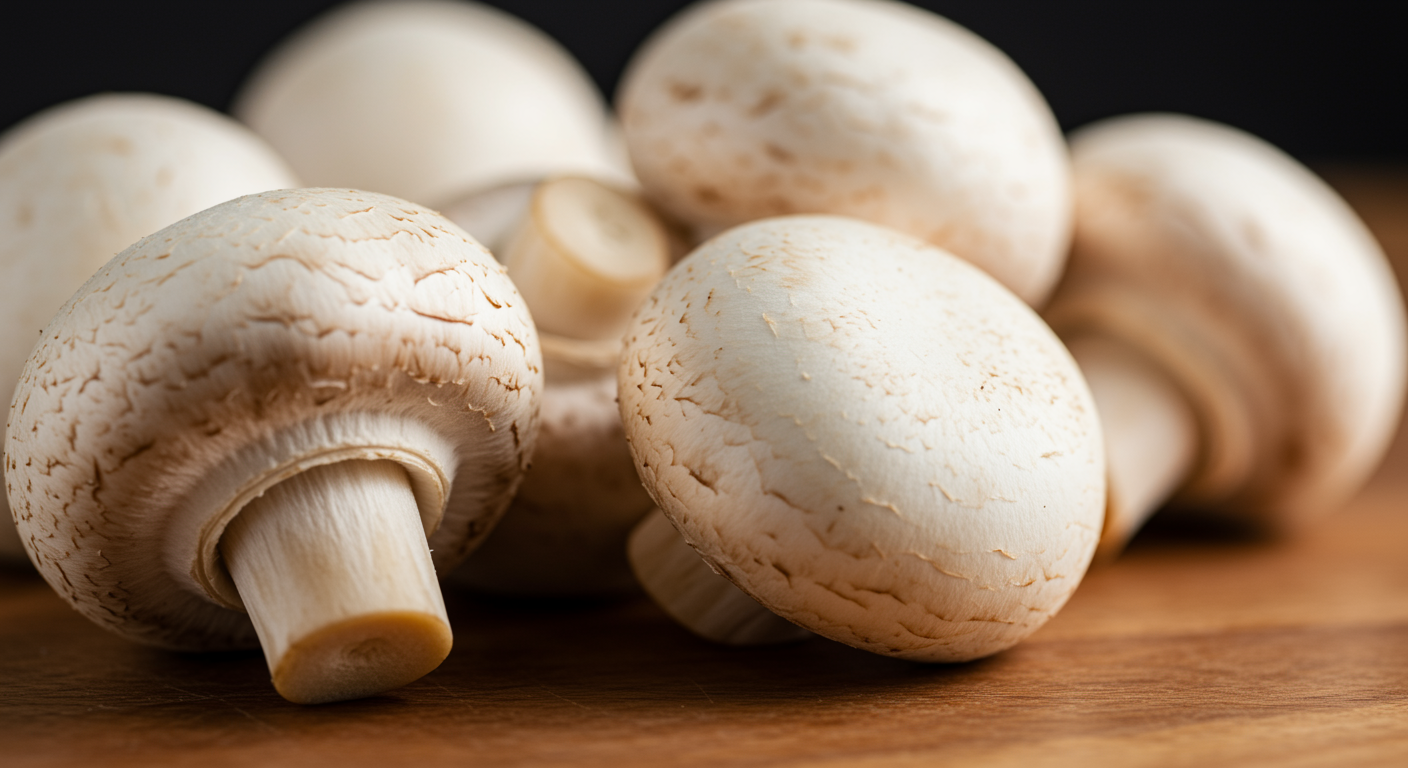
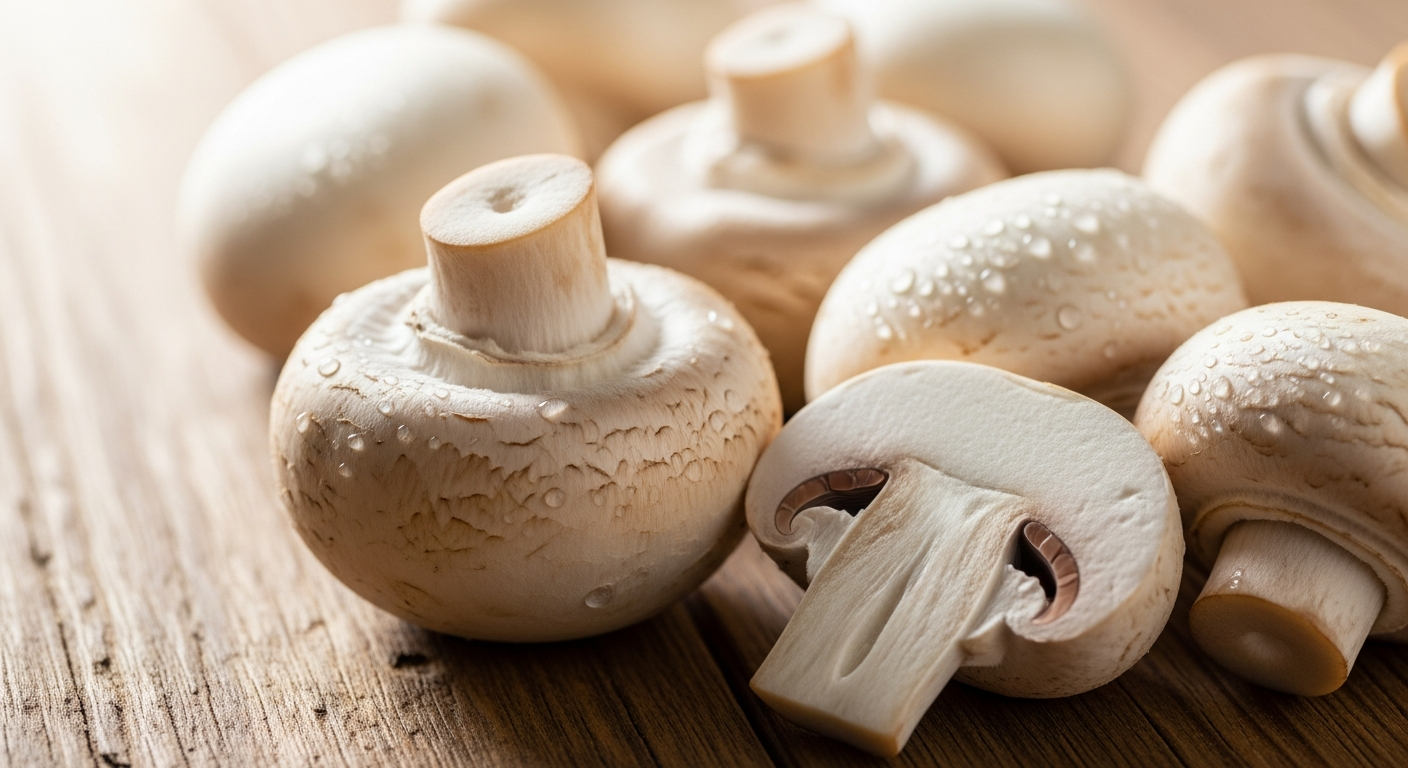
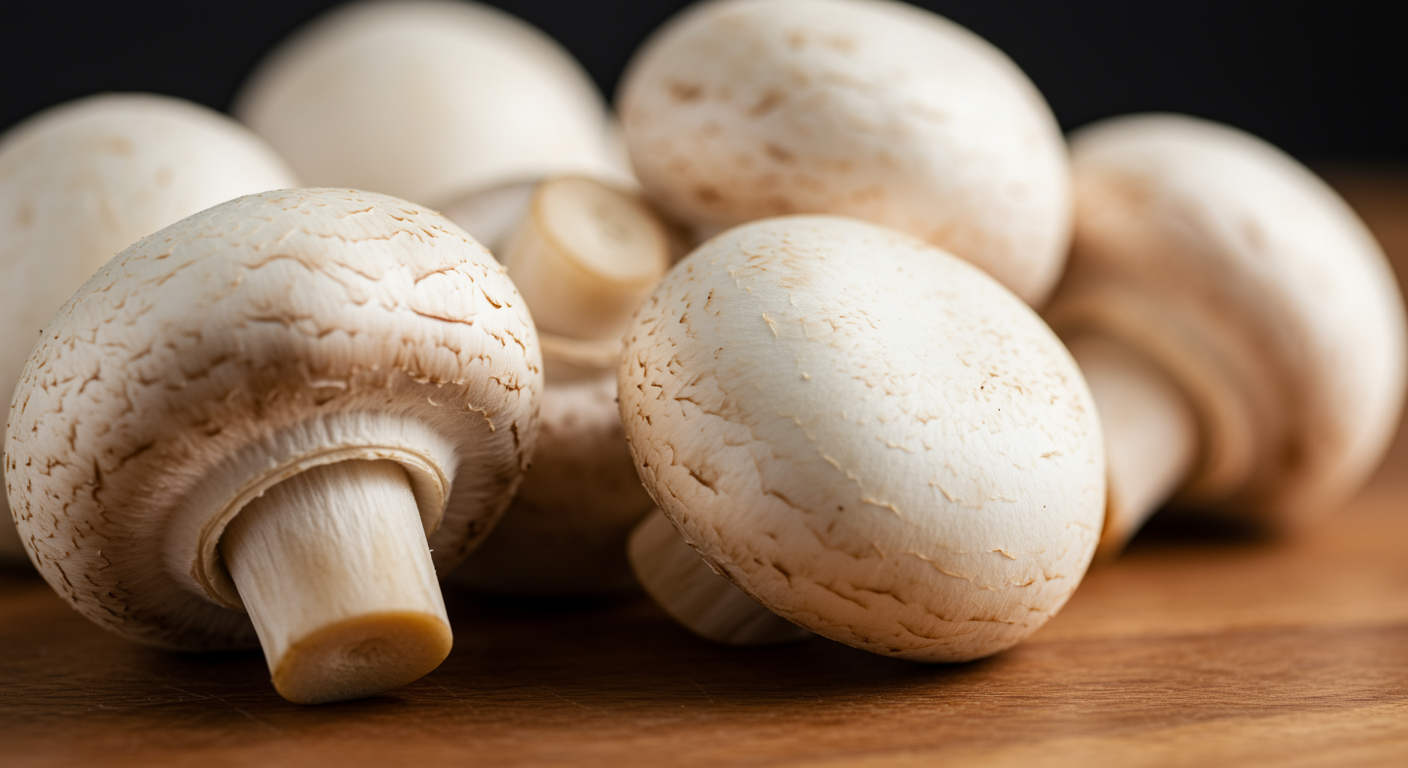
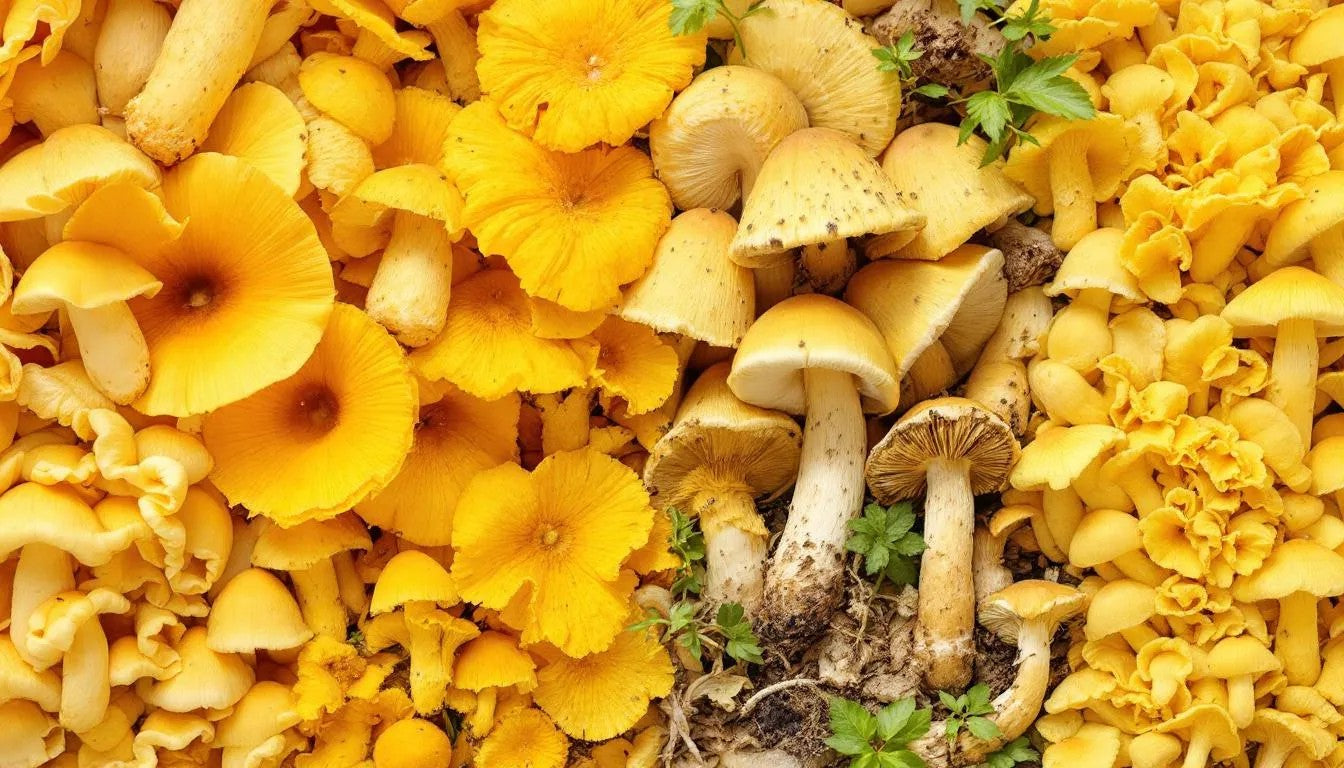

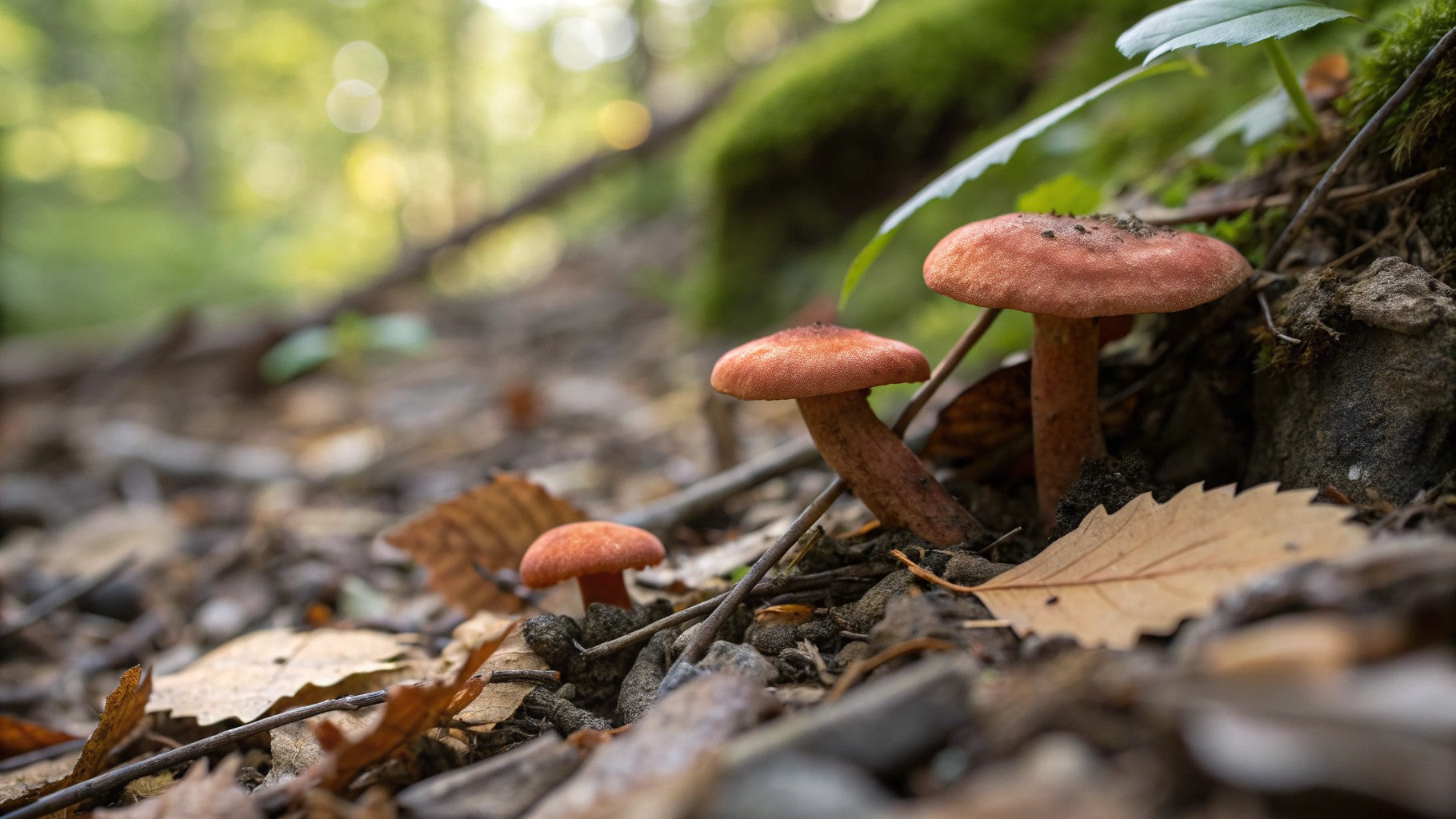
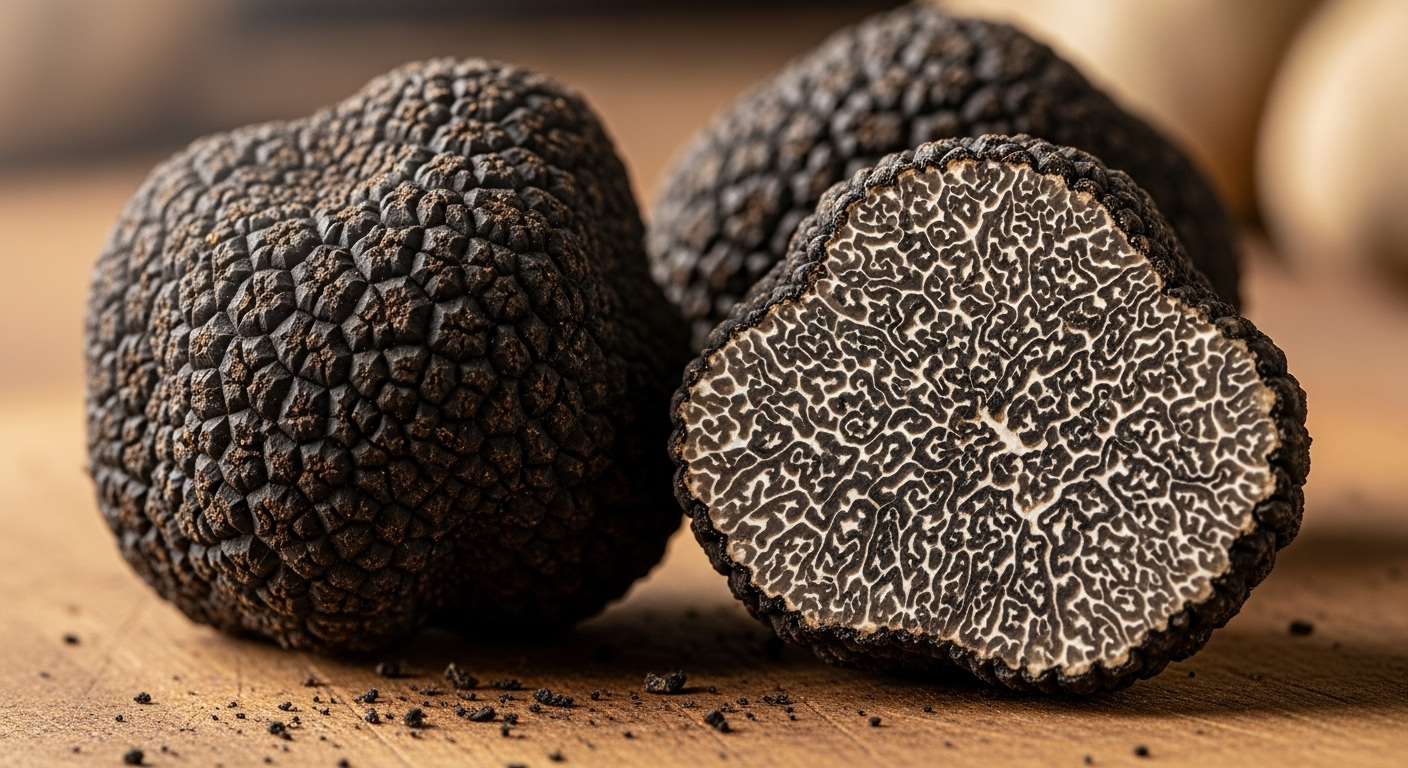
Share:
Wood Ear Mushrooms: A Culinary and Medicinal Treasure of Nature
Lion’s Mane Mushroom: The Ultimate Brain-Boosting Superfood